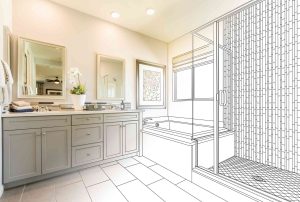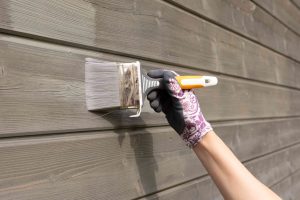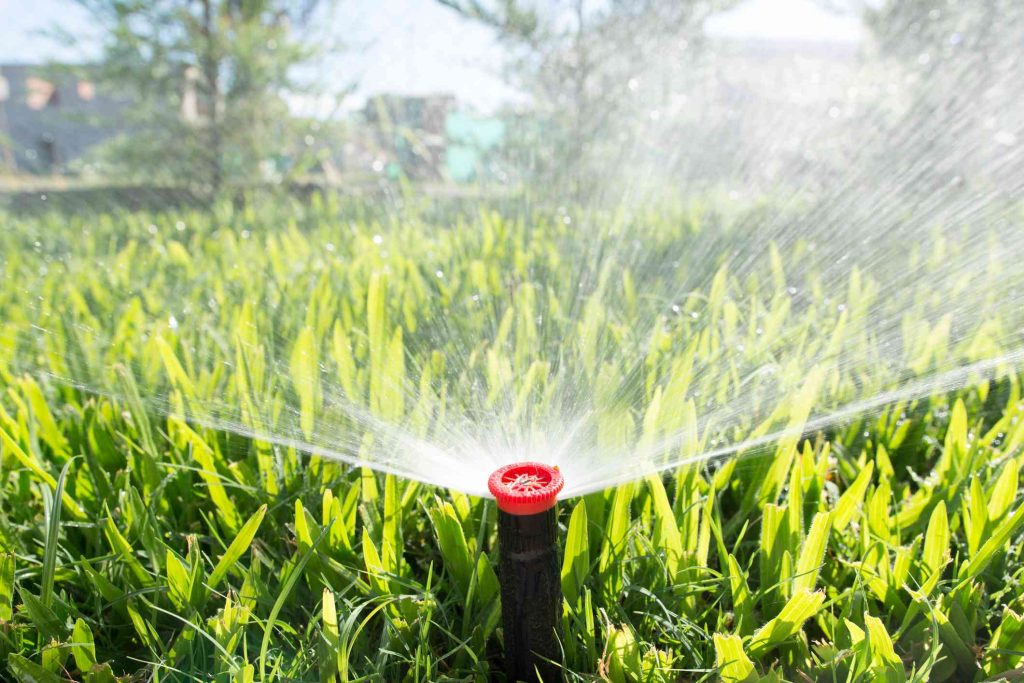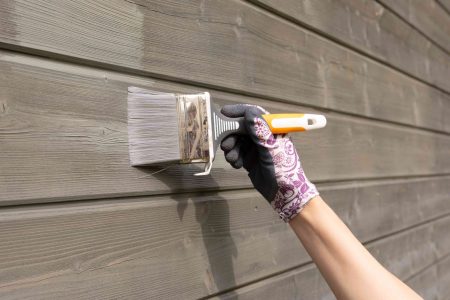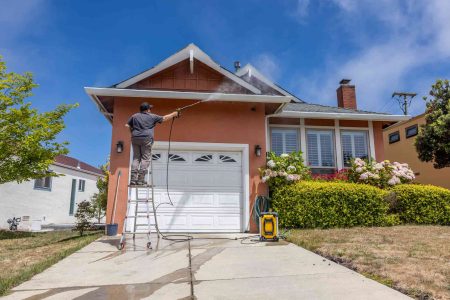Your lawn is a beautiful addition to your property. For your lawn to remain verdant and lush, it needs water. Professionally installed in-ground irrigation systems provide total coverage, but they require a significant amount of digging, time, and money. While loose hoses and sprinklers are a simple low-cost alternative, the sprinkler needs constant moving and unwatered patches are inevitable. There is another option: making a DIY sprinkler system.
A DIY sprinkler system is a great stop-gap solution if you’re contemplating an underground irrigation system in the future. Or it can also be a permanent solution for lawns that don’t need a lot of watering or if you just want to save money.
Basic Features of DIY Sprinkler System
With interconnected sprinkler heads and a timer, this DIY sprinkler system has some of the features found in permanent irrigation systems. Yet because the hoses run above-ground, the system is easy to install and requires no trenching. A DIY sprinkler system uses materials commonly found in home centers.
Outdoor Faucet
An outdoor faucet or spigot on the side of the house should be located within 10 to 20 feet of the edge of the lawn.
Sprinkler Timer
A battery-powered sprinkler timer screws directly into the outdoor faucet. The timer outputs water through a single male-threaded faucet.
Attaching a dual metal shut-off hose “Y” allows you to split that single output into two directions, one on each side of the lawn.
Garden Hose or PVC Pipe
A 1/2-inch garden hose connects the sprinkler timer to the sprinklers. The garden hose remains on ground level. Since the hose is used on the lawn perimeter, it can be disguised with bark or mulch.
Garden hose works best for lawns with irregular shapes or when you think you may need to frequently pull up the system for lawn mowing or for winter care.
Alternatively, PVC pipe can substitute for all or much of the garden hose. As with the garden hose, the PVC pipe runs on the ground. PVC pipe works best for lawns with straight sides or when you think the system will remain in place most of the time.
Sprinkler Spike Base
A metal flow-through lawn sprinkler spike is the base for a sprinkler body. With a sharp point at the bottom, it stakes about 10 to 12 inches into the lawn.
One end is male-threaded and the other end is female-threaded. As a flow-through spike, water can flow into one end, supply the sprinkler body attached to the top, and then flow on through to the next sprinkler in the series.
An inexpensive double male-threaded 1/2-inch PVC sprinkler riser is required to attach the sprinkler body to the spike.
Sprinkler Body
In-ground sprinkler systems often use plastic sprinkler pop-up bodies. The body is buried down to the top of the sprinkler body. When water flows through the sprinkler body, it forces a pop-up section upward. The pop-up remains up for as long as the water is running. This project adapts the same sprinkler body for above-ground use.
Rotator Stream Nozzle
A rotator sprinkler stream nozzle fits into the sprinkler body. It projects water in an adjustable angle, from 90 degrees to just past a semi-circle (200 to 210 degrees).
Safety Considerations
Though this DIY sprinkler system does not require trenches, the sprinkler spikes may penetrate buried electrical, gas, communication, or other vital lines. Call 811 or check online to have your local utilities location service visit and mark your property with washable paint. The service is usually free.
Check your local codes. As with any attachment to the permanent house domestic water piping, there is probably a requirement for a backflow device or vacuum breaker to protect the municipal water supply.
What You’ll Need
Equipment / Tools
- Plumber’s pipe tape
- Pliers
Materials
- 6 1/2-inch flow-through lawn sprinkler spike base
- 6 plastic sprinkler pop-up body, 4-inch
- 6 1/2-inch PVC sprinkler riser (double male thread)
- 6 rotator sprinkler stream nozzles
- 1 dual metal shut-off hose “Y”
- 2 1/2-inch garden hoses, 15-foot
- 4 1/2-inch garden hoses, 25-foot
- 2 1/2-inch threaded hose caps
- Sprinkler timer
Instructions
-
Plan DIY Sprinkler System
A 4-inch pop-up sprinkler body casts water about 15 feet and waters a maximum 700 square feet of lawn. Sprinklers need significant overlap for full coverage.
With this project, the lawn is 40 feet long by 24 feet wide, for a total area of 960 square feet. Six sprinklers, all on the perimeter, will cover the lawn with sufficient overlap.
-
Add Riser to Sprinkler Spike Base
Wrap pipe tape around the threads of one end of the 1/2-inch riser. By hand, turn the riser clockwise into the top of the sprinkler spike base. Do not use a wrench as this will flatten threads on the other end of the riser.
What Is Plumber’s Tape?
Plumber’s pipe tape, which also goes by the trademarked name Teflon tape, is routinely used by plumbers to achieve a watertight seal on threaded pipes. Plumber’s pipe tape should always be turned onto the male threads in the same clockwise direction that you’ll be turning the piece with the female threads.
-
Add Sprinkler Body to Spike Base
Wrap the threads of the riser with plumber’s pipe tape. Turn the sprinkler body clockwise onto the riser as far as it will comfortably go. Be careful not to turn too far, though, as this may crack the sprinkler body or riser.
-
Fit Rotator Stream Nozzle Into Sprinkler Body
Push the rotator stream nozzle down into the sprinkler body.
-
Place Sprinklers in Lawn
- Corners: One sprinkler will be placed at each of the four corners.
- Mid-points: One sprinkler will be placed at each of the two mid-points on the long side of the lawn. So, place the sprinkler at the 20-foot spot on the long side and repeat this on the other long side.
-
Attach Sprinkler Timer to Dual Hose Y
Turn the female-threaded end of the dual metal shut-off hose “Y” to the male-threaded end of the sprinkler timer.
-
Run Hoses to First Two Corners
Connect one of the 15-foot hoses to one side of the dual hose “Y.” Repeat on the other side of the “Y” with the second 15-foot hose. Run each of these hoses to the first two corners of the lawn. Attach them to the corner lawn sprinkler spike bases.
-
Run Hoses to Mid-point Sprinklers
Use the 25-foot hoses to connect from the corner sprinklers to the mid-point sprinklers.
-
Run Hoses to Final Corner Sprinklers
Use the last two 25-foot hoses to connect from the mid-point sprinklers to the last two corner sprinklers.
-
Cap Last Sprinklers
Turn the 1/2-inch threaded hose caps onto the last two corner sprinklers to prevent the water from flowing out.
-
Set Rotator Stream Nozzle Angle
- Corners: Set the rotator stream nozzle at just past 90 degrees on each sprinkler.
- Mid-points: Set each of the two mid-point nozzles at a little past 180 degrees.
With all sprinklers, make sure that they are pointing toward the lawn.
Alternative: PVC Pipe Instead of Garden Hose
For a sleeker installation that eliminates using a garden hose on the long sides of the lawn, use 1/2-inch PVC pipe. Because PVC pipe is not threaded, connect the pipes to the threaded sprinkler spikes with 1/2-inch PVC male and female adapters.
- Run 15-foot garden hoses from the sprinkler timer’s “Y” to the input side of the first two corner sprinklers.
- Connect a 1/2-inch PVC male adapter to the output side of the corner sprinkler spike.
- Using PVC cement, attach a 10-foot PVC pipe to the other end of the male adapter. The PVC pipe runs above-ground.
- With cement, attach a 1/2-inch PVC coupler to the end of the PVC pipe, then connect another 10-foot PVC pipe to the coupler.
- Continue the PVC pipe to the mid-point sprinkler spike, using a 1/2-inch female adapter.
- Continue in the same matter to the two end corner sprinklers.
- Cap the last two sprinklers with 1/2-inch threaded hose caps.
When to Call a Professional
Call a professional landscaper or irrigation company to install an in-ground irrigation system.
Read the full article here



